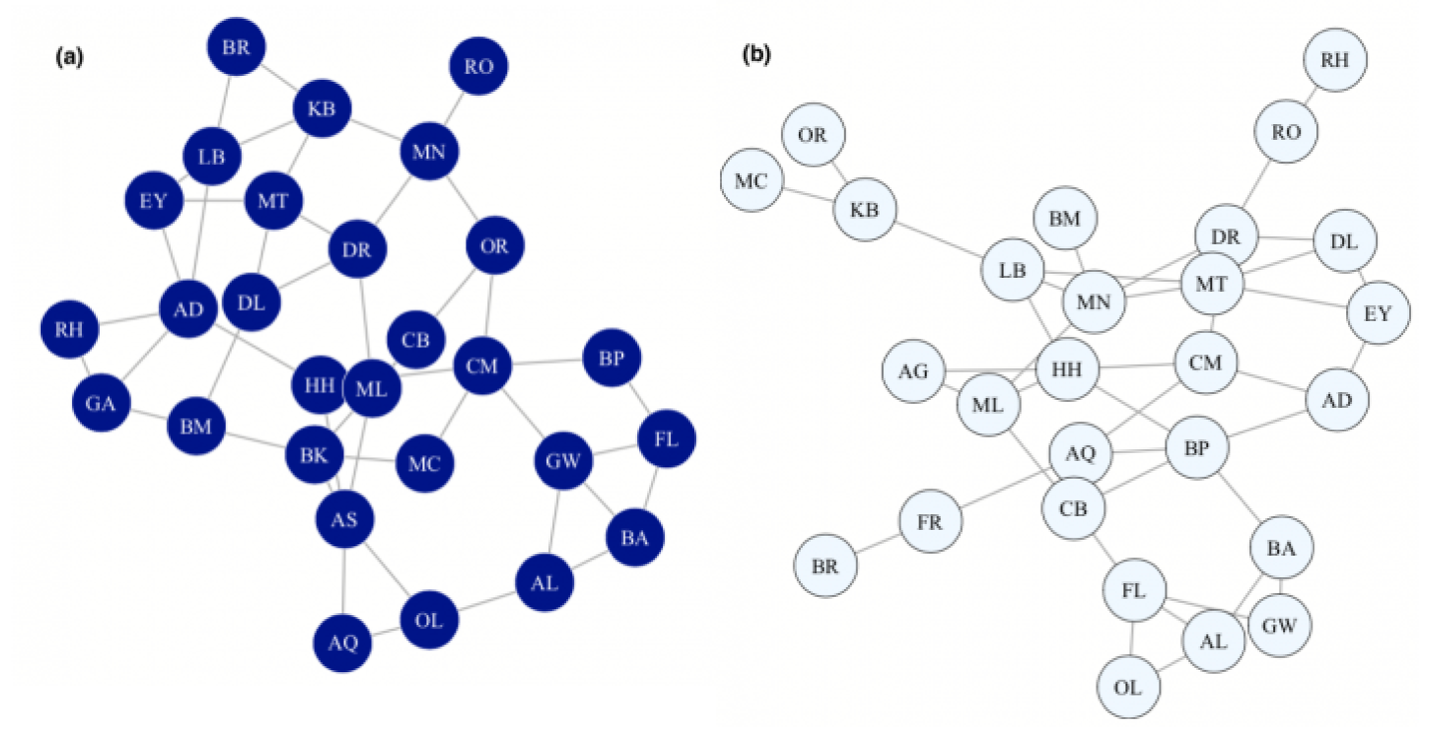Sex-specific graphs: Relating group-specific topology to demographic and landscape data

Bertrand P, Bowman J, Dyer RJ, Manseau M, Wilson PJ. Sex-specific graphs: Relating group-specific topology to demographic and landscape data. Mol Ecol. 2017; 26: 3898–3912. https://doi.org/10.1111/mec.14174
Abstract
Sex-specific genetic structure is a commonly observed pattern among vertebrate species. Facing differential selective pressures, individuals may adopt sex-specific life history traits that ultimately shape genetic variation among populations. Although differential dispersal dynamics are commonly detected in the literature, few studies have used genetic structure to investigate sex-specific functional connectivity. The recent use of graph-theoretic approaches in landscape genetics has demonstrated network capacities to describe complex system behaviors where network topology represents genetic interaction among subunits. Here, we partition the overall genetic structure into sex-specific graphs, revealing different male and female dispersal dynamics of a fisher (Pekania [Martes] pennanti) metapopulation in southern Ontario. Our analyses based on network topologies supported the hypothesis of male-biased dispersal. Furthermore, we demonstrated that the effect of the landscape, identified at the population level, could be partitioned among sex-specific strata. We found that female connectivity was negatively correlated with snow depth, whereas connectivity among males was not. Our findings underscore the potential of conducting sex-specific analysis by identifying landscape elements or configurations that differentially promote or impede functional connectivity between sexes, revealing processes that may otherwise remain cryptic. We propose that the sex-specific graph approach would apply to other vagile species where differential sex-specific processes are expected to occur.
